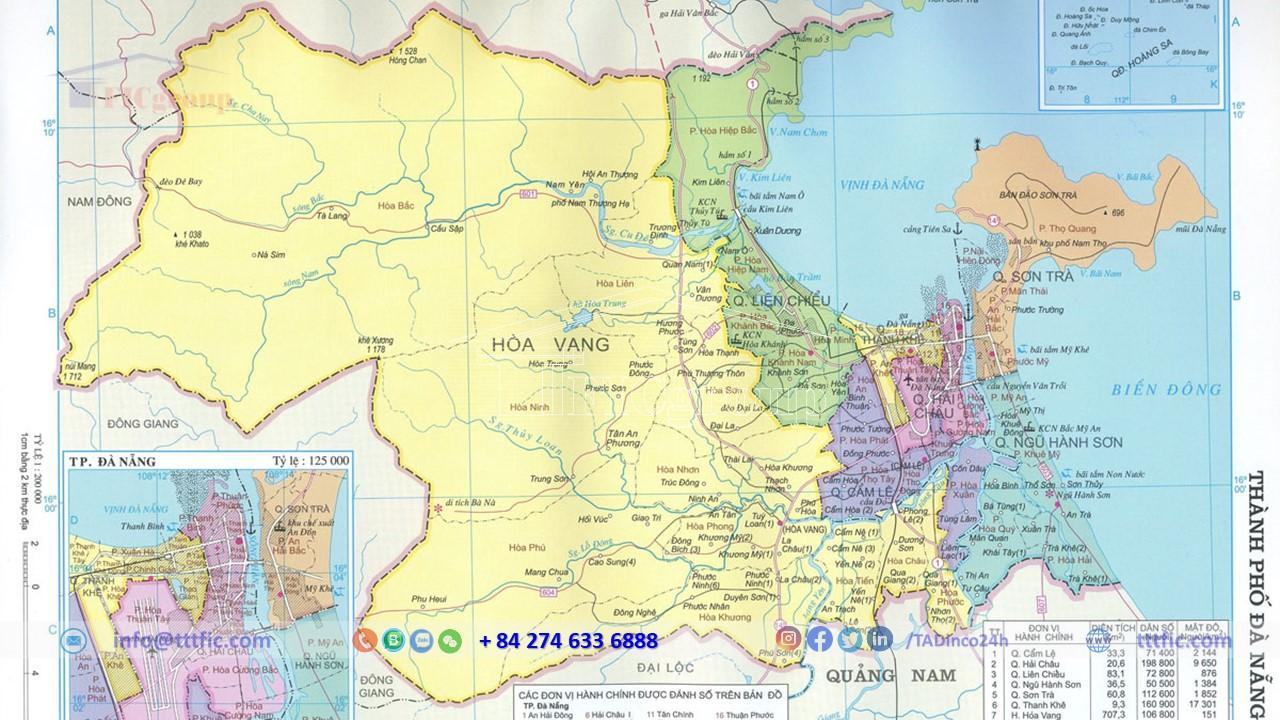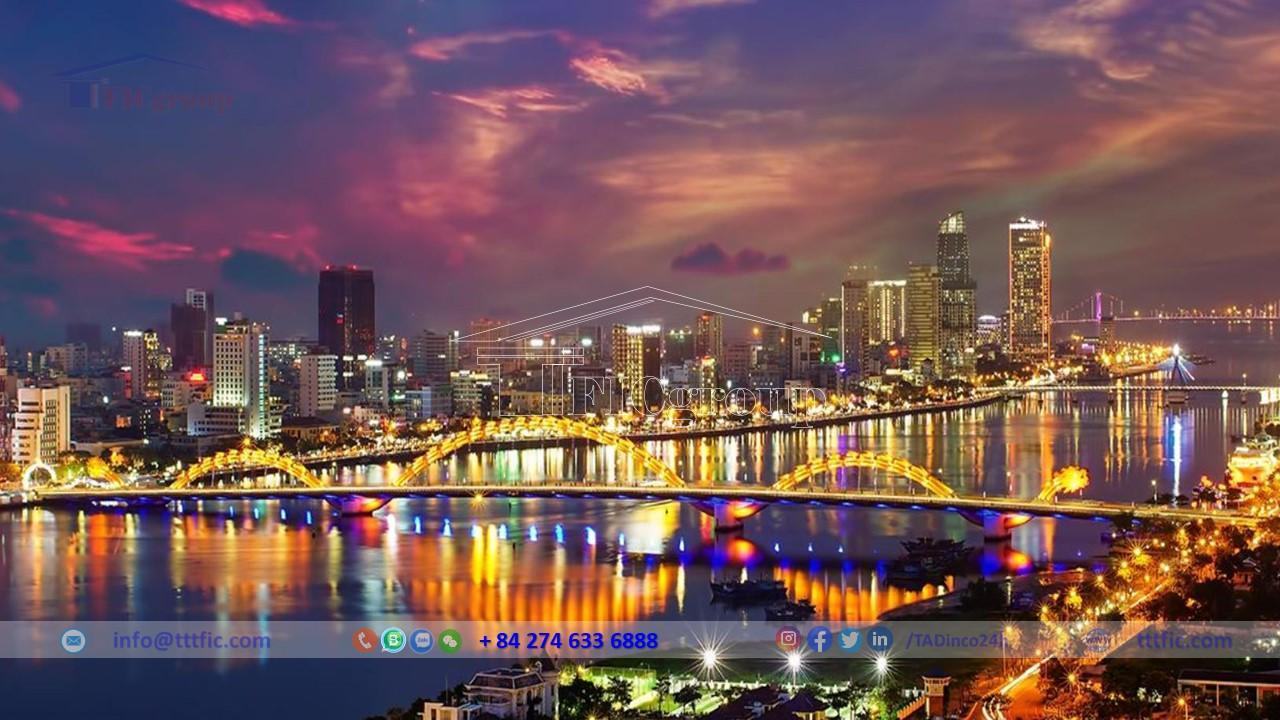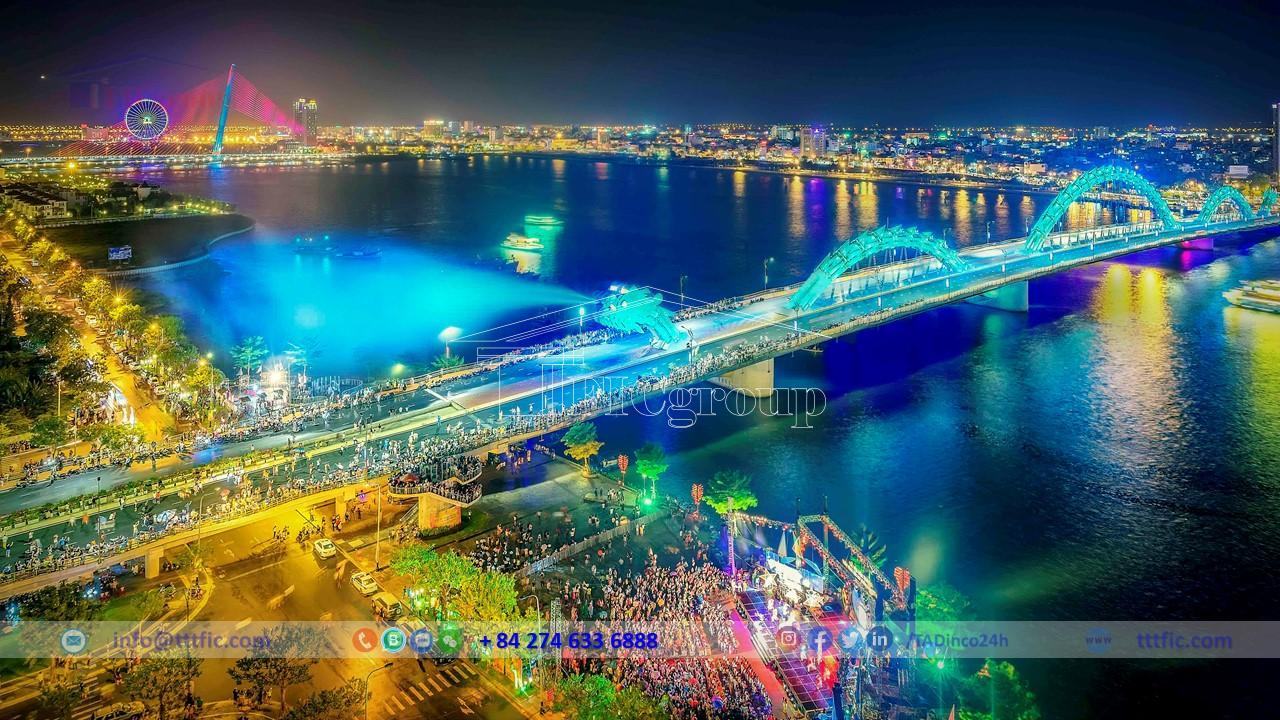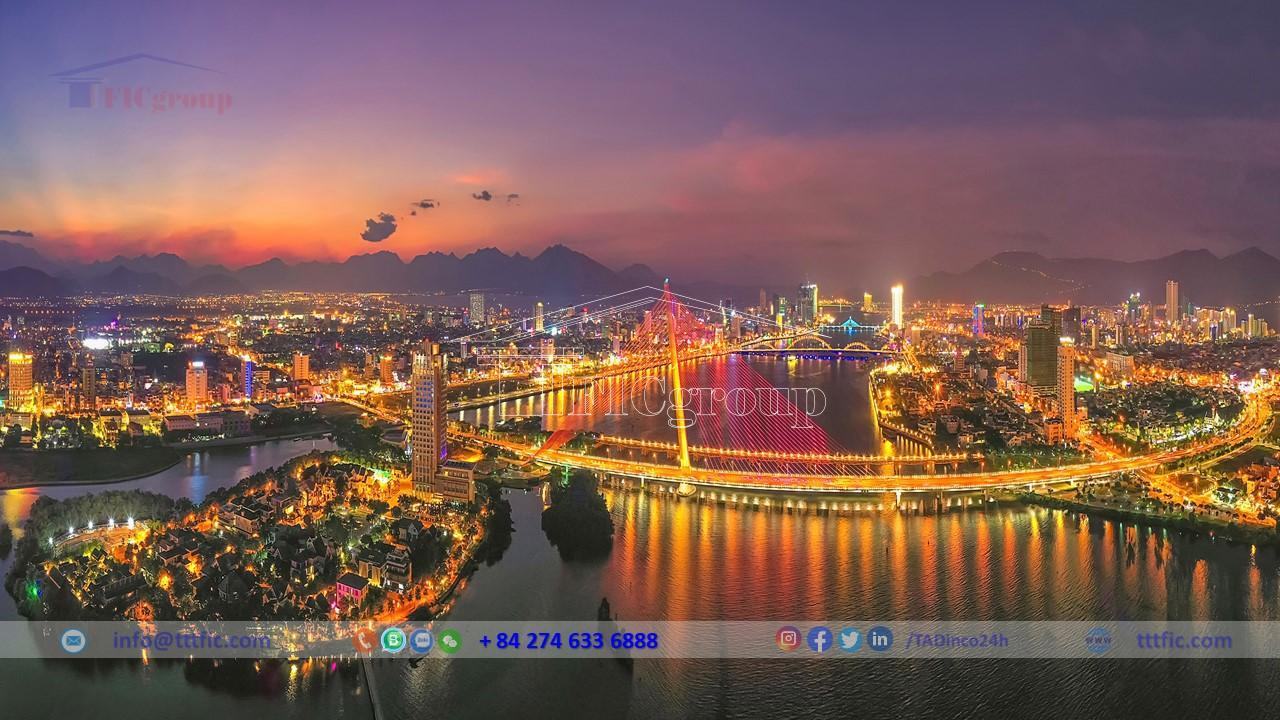
Hoa Khanh Industrial Park Expansion - Da Nang
- Investor: Saigon - Da Nang Investment Joint Stock Company (SDN)
- Price: 115 USD/m2
- Area: 132,6 Ha
Da Nang City, the fourth-largest city in Vietnam after Ho Chi Minh City, Hanoi, and Hai Phong, exhibits significant urbanization and socio-economic development, and is located on the South China Sea. Moreover, it houses the strategic port of the Han River and is recognized as one of Vietnam’s five centrally-controlled cities.
Ideally positioned between the capital, Hanoi, and Ho Chi Minh City, Da Nang also serves as the hub of three World Cultural Heritages: the Ancient Capital of Hue, Hoi An Ancient Town, and My Son Sanctuary. Furthermore, Da Nang is flanked by Thua Thien-Hue to the north and Quang Nam to the west and south, while the East Sea lies to the east.
Situated at Vietnam’s mid-latitude, Da Nang becomes a crucial transportation axis, marking the end of the East-West Economic Corridor stretching across Vietnam, Laos, Thailand, and Myanmar.
Acting as a diversified multi-sectoral hub, Da Nang emerges as the key political, economic, and social center of the Central Highlands region, excelling in various domains like industry, finance, tourism, services, culture, education, high-quality healthcare, science, technology, innovation, and entrepreneurship. Additionally, Da Nang, as the organizer of regional and international events, plays a central role in Vietnam’s central economic key zone, standing as a first-tier city and a national hub, akin to Hai Phong and Can Tho.
My Khe beach in Da Nang, which Forbes has acclaimed as “one of the six most attractive beaches on the planet,” further enhances the city’s allure. Over recent years, Da Nang has proactively invested in infrastructure, environment, and social welfare, thus earning the title of “the most livable city in Vietnam”. Lastly, Da Nang, representing Vietnam, proudly secured a spot in the Top 10 Best Places to Live Abroad in 2018, according to the “Live and Invest Overseas” magazine.
Positioned between 15°15′ and 16°40′ N latitude and 107°17′ and 108°20′ E longitude, Da Nang spans an area of roughly 1285.4 km². Furthermore, it’s nestled midway between Hanoi to the north, which is 766 km away, and Ho Chi Minh City to the south, a distance of 961 km via National Highway 1.
Da Nang neighbors Thua Thien Hue to the north and Quang Nam to the west and south, while the East Sea graces its eastern flank. Additionally, the city is the epicenter of three World Heritage sites: the ancient capital Hue, Hoi An Old Town, and My Son Sanctuary.
Serving as an essential transportation hub via road, rail, sea, and air in the north-south corridor, Da Nang also functions as a significant gateway for the Central Highlands, Laos, northeast Cambodia, Thailand, and Myanmar to access the sea. Finally, the city’s proximity to Southeast Asia’s major economic hubs, including Bangkok, Kuala Lumpur, Singapore, and Manila, is between 1,000 and 2,000 km.

The city of Da Nang is demarcated by four geographical extremes: the southernmost in Hoa Khuong commune, Hoa Vang district;the northernmost point in Hoa Hiep Bac ward, Lien Chieu district; the easternmost in Tho Quang ward, Son Tra district and the westernmost in Hoa Bac commune, Hoa Vang district
In addition to its mainland, the city’s maritime territory includes the Paracel Islands (an area currently occupied unlawfully by China). These islands lie between 15°45’ and 17°15’ N latitude and 111° to 113° E longitude, parallel to the coastlines of Quang Tri, Thua Thien Hue, Quang Nam, and part of Quang Ngai provinces. They are roughly 120 nautical miles from Ly Son island (part of Quang Ngai province), covering a maritime area of about 30,000 km².
The total land area of the islands is about 10 km², with Phu Lam Island being the largest (Vietnamese sources: about 1.5 km², Chinese sources: 2.1 km²). The Paracels oversee an international maritime artery stretching from the Pacific to the Indian and Atlantic Oceans.
This sea area, rich in minerals and seafood, offers significant economic development potential. Still, more importantly, it holds a strategic military position controlling maritime and air traffic in the northern part of the East Sea.
The Paracels’ four extremities include the northernmost at North Reef, the southernmost at Elephant Trunk Reef, the easternmost at Sand Cay, and the westernmost at Tri Ton Island.
The Paracel Islands, belonging to Vietnam, consist of two primary groups: the Crescent Group located in the west and the Amphitrite Group situated in the east. The Crescent Group, resembling a scythe or crescent shape, comprises islands like Hoang Sa, Huu Nhat, Duy Mong, Quang Anh, Quang Hoa, Bach Quy, and Tri Ton, along with rocks and submerged banks.
In contrast, the Amphitrite Group in the east encompasses larger islands within the Paracel archipelago, including notable coral islands in the South China Sea such as Phu Lam, Cay, Linh Con, Trung, Bac, Nam, and the Tay sandbank. These islands showcase distinctive ring-shaped Pacific coral reefs, formed by coral growth and the sinking of the Earth’s crust.
The island landscapes exhibit simplicity but possess the unique features of tropical coral terrain, characterized by three distinct components: the visible islands, the surrounding coral reef corridor (tidal flat), and the steep underwater slope. Most of these exposed islands have an elevation of less than 10 meters.


High-tech agriculture is one of the five key sectors for economic development in Da Nang, as outlined in Resolution 43 by the Politburo, which emphasizes the need for focused investment resources. Accordingly, Da Nang has planned infrastructure for high-tech agriculture projects, allocated land funds, and offered attractive incentives to attract investments in this field.

Da Nang is a leading medical center in the Central Highlands and the country. Patients from the Central Highlands and surrounding provinces trust the city’s modern, comprehensive, and well-coordinated healthcare system, which includes reputable hospitals. As of 2018, there were 73 healthcare facilities under the Department of Health and Ministry of Health, including 26 hospitals, 1 Nursing Hospital, 1 Orthopedic and Rehabilitation Hospital, and 56 medical stations. Da Nang had a ratio of 17.49 doctors per 10,000 people and 79.03 beds per 10,000 people. The city had a total of 5,920 beds in healthcare facilities under the Department of Health, 1,510 beds in central government hospitals, and 1,410 beds in district/commune health centers, along with 943 beds in private healthcare facilities.
In 2017, the city’s healthcare sector provided medical examinations to 3,739,982 people and inpatient treatment to 416,254 patients from neighboring provinces. Private hospitals and clinics are also gradually developing in Da Nang. The city achieved the goal of universal health insurance coverage by the end of 2012, with 91.6% of the population enrolled, two years ahead of the national target. With the establishment of the University of Medicine and Pharmacy under Da Nang University, the city is continuing to build and develop hospitals such as Da Nang Hospital No.2, an international hospital, Phase 2 of the Obstetrics and Pediatrics Hospital, and the Central Pediatrics Hospital on its territory. Da Nang aims to become a major medical center in the Central Highlands and the country.
Table of contents



